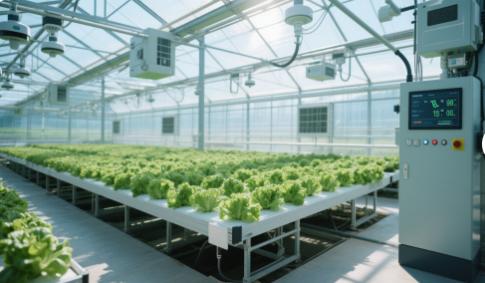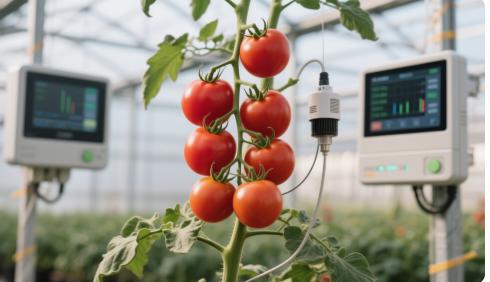Imagine stepping into a greenhouse where temperature, humidity, and light are all just right.
The plants are growing strong and healthy, and pest problems are minimal. This is not because someone is constantly adjusting everything by hand. Instead, a kind of invisible “brain” does it all automatically. This is the automated control system in a smart greenhouse.
This technology is transforming agriculture, making it easier and more efficient to grow crops. Companies like Chengfei Greenhouse have applied advanced automated systems to help farmers manage their crops precisely.
Sensors: The Super Senses of a Greenhouse
Smart greenhouses are equipped with various sensors that continuously monitor environmental conditions. These sensors measure:
- lemperature
- Humidity
- Light intensity
- Soil moisture
- Carbon dioxide levels
- Wind speed
Soil moisture sensors can detect exactly when watering is needed. Light sensors adjust shading systems automatically, ensuring plants receive the right amount of sunlight.

Controllers: The Brain of the System
Sensors feed data to the controller, which is the core of the system. The controller analyzes the data and makes decisions to keep the environment ideal.
If the temperature rises too high, the controller activates fans or opens vents to cool down the greenhouse. This helps prevent plant stress and maintains steady growth.
Actuators: The Hands and Feet
Once the controller makes a decision, actuators carry out the commands. They operate:
- Irrigation systems
- LED grow lights
- Heaters
- Ventilation fans
Actuators apply water only when needed and adjust lighting based on the day’s conditions, saving resources and improving efficiency.

How the System Works
- Sensors collect real-time data.
- The controller compares data to ideal parameters.
- If needed, actuators are triggered to adjust the environment.
For example, if temperatures drop at night, heaters are turned on to maintain warmth. This loop runs continuously for optimal conditions.
Benefits of Automated Control Systems
- Reduces labor: Remote monitoring and automation reduce the need for constant human presence.
- Improves crop health: Stable conditions help plants grow better and resist diseases.
- Saves water and energy: Targeted irrigation and lighting cut down waste and costs.
Fast Response to Change
The system reacts quickly to shifts in the environment. High humidity? Vents open. Soil too dry? Irrigation begins. It all happens without delay, protecting plants from stress or disease.
Looking Ahead: The Future of Smart Farming
Next-gen systems will integrate machine learning to predict pests and diseases before they spread. Systems will become more connected, managing:
- Climate
- Irrigation
- Nutrients
- Light
Mobile apps will allow farmers to manage everything from anywhere, anytime.
Automated control systems are helping agriculture become smarter, greener, and more efficient.
This is the future of farming—powered by technology, data, and innovation.
Welcome to have a further discussion with us.
Email:Lark@cfgreenhouse.com
Phone:+86 19130604657
Post time: Jul-07-2025







 Click to Chat
Click to Chat